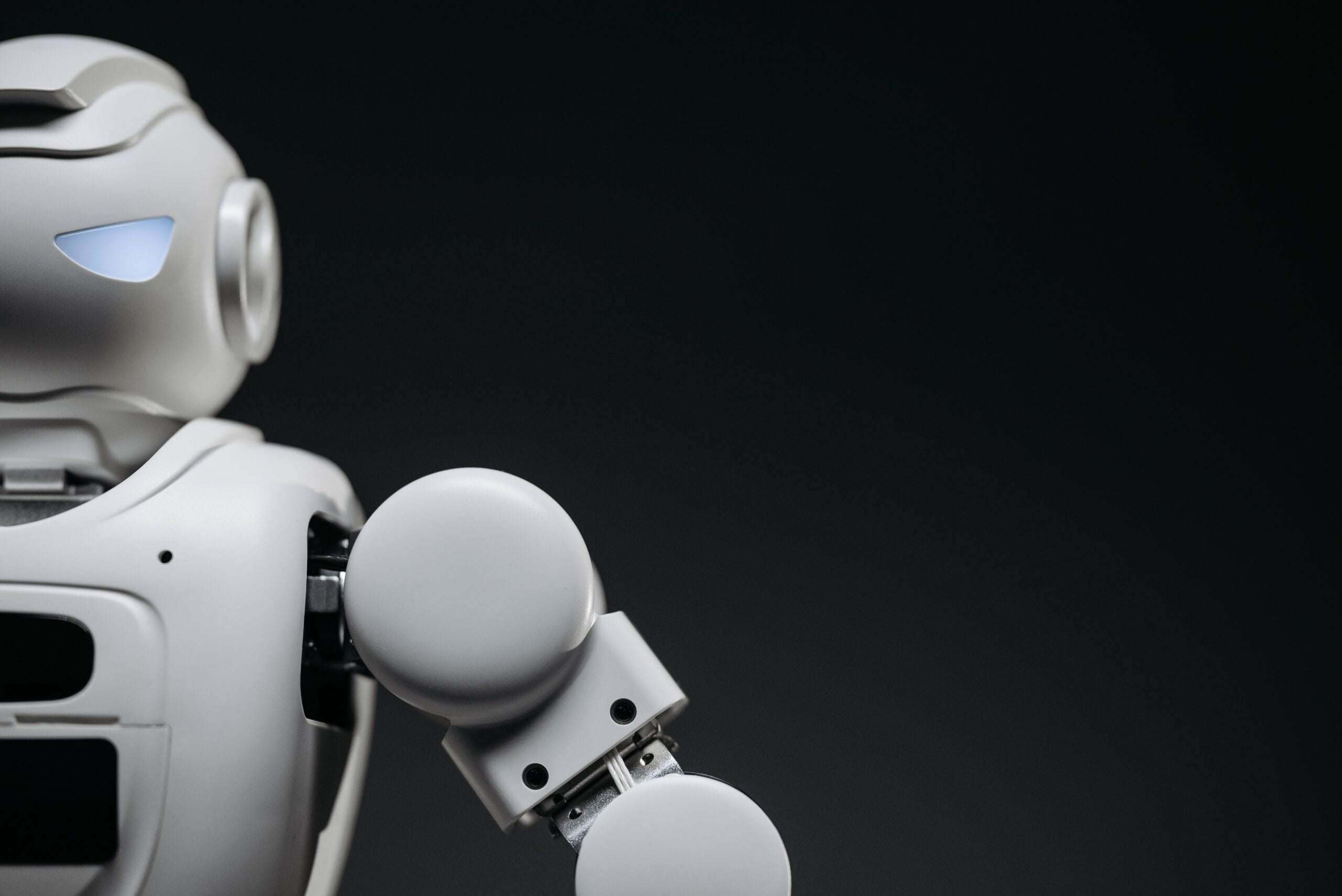The Fascination of AI
AI, or artificial intelligence, is a captivating, controversial and complex topic that attracts the attention of researchers, philosophers, scientists and laypeople alike. It’s a domain of exploration where reality converges with the realms of science fiction. However, amidst all the allure, hype, and sometimes fear, one question still puzzles many: Is AI really intelligent?
To answer this, we first need to discern what we mean by ‘intelligence’. In humans, intelligence can involve a wide range of capabilities, such as learning from experience, adapting to new situations, understanding and manipulating abstract concepts, and using knowledge to navigate our world.
In contrast, AI systems, even the most advanced ones, operate based on predefined algorithms and large datasets. They “learn” and “improve” by optimising these algorithms to predict outcomes, make decisions, or classify data more accurately. But does this amount to intelligence as we humans understand it?
Table 1: AI vs Human Intelligence
| AI | Human Intelligence | |
| Learning | Through algorithms and data | Through experience and interaction |
| Adaptation | Limited to predefined parameters | Innate ability to adapt to new situations |
| Understanding | Dependent on the input data and programming | Innate understanding of abstract concepts |
| Navigation | Requires specific programming for each scenario | Uses knowledge to navigate the world |
AI Tools – Intelligence or Just Algorithms?
AI tools, from your friendly voice assistant to the advanced machine learning systems predicting financial market trends, are all built on complex algorithms that interpret data and make decisions based on that interpretation. They do not possess understanding or consciousness in the way humans do. Their “intelligence” is, in fact, the product of human ingenuity, coding skills, and vast amounts of data.

But does the fact that these tools can’t “understand” or “experience” in the human sense discount their intelligence altogether? Or does it merely indicate a different form of intelligence, one that we’re only beginning to understand ourselves?
As we delve into the vast world of AI and its implications for our future, it’s essential to maintain a sense of sanctity. Sanctity.AI believes in the safe, responsible, and reliable use of AI, but the question that arises is – are we moving too fast with AI, ignoring potential dangers and pitfalls that come with this powerful technology?
What implications does the gap between AI and human intelligence have for AI safety?
AI Safety – Balancing Innovation and Caution

In the field of AI, safety is a prime concern. It’s not merely about data privacy or algorithmic fairness, although these are significant issues. It’s about ensuring the AI’s actions align with human values, a challenge when the AI lacks any intrinsic understanding of those values.
We must develop mechanisms to control AI, especially as it becomes more powerful. This involves creating robust, beneficial AI – systems that robustly do what we want without harming humanity or unintentionally causing problems.
Table 2: Challenges and Solutions in AI Safety
| Challenges | Why it’s a problem | Potential Solutions |
| Alignment | AI doesn’t intrinsically understand human values | Use of value learning techniques |
| Robustness | AI can make harmful mistakes | Application of rigorous verification techniques |
| Interpretability | AI decisions can be hard to understand | Developing better explainability tools |
| Fairness | Bias in AI systems can lead to unfair outcomes | Improving data quality and bias detection |
AI – A Double-Edged Sword?

AI’s ability to process and analyse vast amounts of data at incredible speeds is what makes it so valuable. But this is also what makes it potentially dangerous. As the difference between AI and human intelligence becomes more apparent, it’s crucial to scrutinise the risks along with the rewards.
For instance, AI tools could be used to manipulate information, influence public opinion, or even automate cyber attacks. They could also lead to job displacement in various sectors, affecting the livelihood of millions.
Does the fact that these tools can’t fully understand or “experience” in the human sense amplify these threats? As we push the boundaries of what AI can do, are we losing sight of what it should do?
Table 3: Potential Risks and Mitigation Strategies of AI
| Potential Risks | Why it’s a problem | Mitigation Strategies |
| Information Manipulation | Can distort truth and influence opinion | Developing better fact-checking AI tools |
| Automation of Cyber Attacks | May lead to widespread damage | Strengthening cybersecurity measures |
| Job Displacement | Could affect livelihoods of many | Reskilling and upskilling workforce |
Sanctity.AI advocates for an informed and responsible approach towards AI. As we embrace the power of AI, how do we ensure its responsible usage?
The Human Element in AI
The narrative around AI often posits it as an entity separate from us – a creation that might potentially surpass its creator. But it’s crucial to remember that AI is a tool designed, developed, and deployed by humans. The sanctity of AI lies in its users’ hands, in our collective responsibility to use this powerful tool wisely and ethically.
AI is not intelligent in the way humans are; it doesn’t understand or experience the world. It simply operates based on the programming and data we provide. Thus, the quality, inclusivity, and integrity of that data and programming become vital.
The Role of Data in Shaping AI

The phrase “Garbage in, garbage out” holds particularly true for AI. The quality of data used to train AI systems significantly influences their performance and behaviour. Bias in data can lead to AI making unfair or harmful decisions, which might perpetuate societal prejudices and inequalities.
Table 4: Data Challenges and Their Impact on AI
| Data Challenge | Impact on AI | Possible Solution |
| Data Quality | Poor quality data leads to inaccurate AI | Improvement of data collection and cleaning processes |
| Data Bias | Bias in data can lead to unfair AI decisions | Better representation and diversity in data |
| Data Privacy | Improper data handling can violate privacy | Implementing stringent data protection measures |
Sanctity.AI emphasises the critical role of data in creating safe and reliable AI tools. But how do we ensure the data we use respects individual privacy and is free from bias?
Responsible AI – A Collaborative Effort
Responsibility in AI isn’t just about creating robust algorithms or collecting unbiased, high-quality data. It’s also about collaboration and transparency among stakeholders – developers, users, policy makers, and the public. It’s about enabling an open conversation around AI, its capabilities, its limitations, and its potential impact on society.
When it comes to responsible AI, no stakeholder can act in isolation. Policies need to be drafted with insights from technologists, ethical considerations must be ingrained into the development process, and the public must be educated about AI and its implications.
Table 5: Stakeholders and Their Roles in Responsible AI
| Stakeholder | Role |
| Developers | To design and implement ethical and safe AI systems |
| Policy Makers | To draft and enforce regulations ensuring responsible AI use |
| Public | To be informed users, aware of AI’s potential and its limitations |
| Educational Institutions | To foster AI literacy and ethical design practices |
Navigating the Future with AI
As we continue to push the boundaries of AI, we also need to redefine and rethink the principles that guide this technology. Navigating the future with AI requires a delicate balance between unleashing its potential and preserving the sanctity of human values and societal norms.
One of the significant challenges here is the dynamic nature of both technology and society. As technology evolves, so do societal norms and values. Thus, a static approach to responsible AI is not feasible. We need adaptive and flexible strategies that can respond to these changes effectively.
Conclusion

The question of whether AI is truly intelligent depends on how we define intelligence. AI and human intelligence are fundamentally different, with the former based on algorithms and data and the latter on experiences and innate capabilities. This difference presents both opportunities and challenges as we integrate AI more deeply into our lives and societies.
AI holds immense potential. It can revolutionise sectors from healthcare to finance, contribute to scientific research, and facilitate day-to-day tasks. But, as Sanctity.AI highlights, it’s not about harnessing this potential at any cost. It’s about ensuring the use of AI is safe, reliable, and beneficial for humanity.
Importance of the Sanctity of AI
Understanding AI’s capabilities and limitations is crucial for its safe and effective use. We need to ensure that while we explore AI’s potential, we don’t lose sight of its sanctity – the importance of using it responsibly and ethically. By treating AI with sanctity, we respect the dignity of all individuals and societies that interact with it. We also protect ourselves from potential misuse or unintended consequences of this powerful technology. Responsible AI isn’t just about creating safer tools; it’s about building a future where technology serves humanity, not the other way around.




